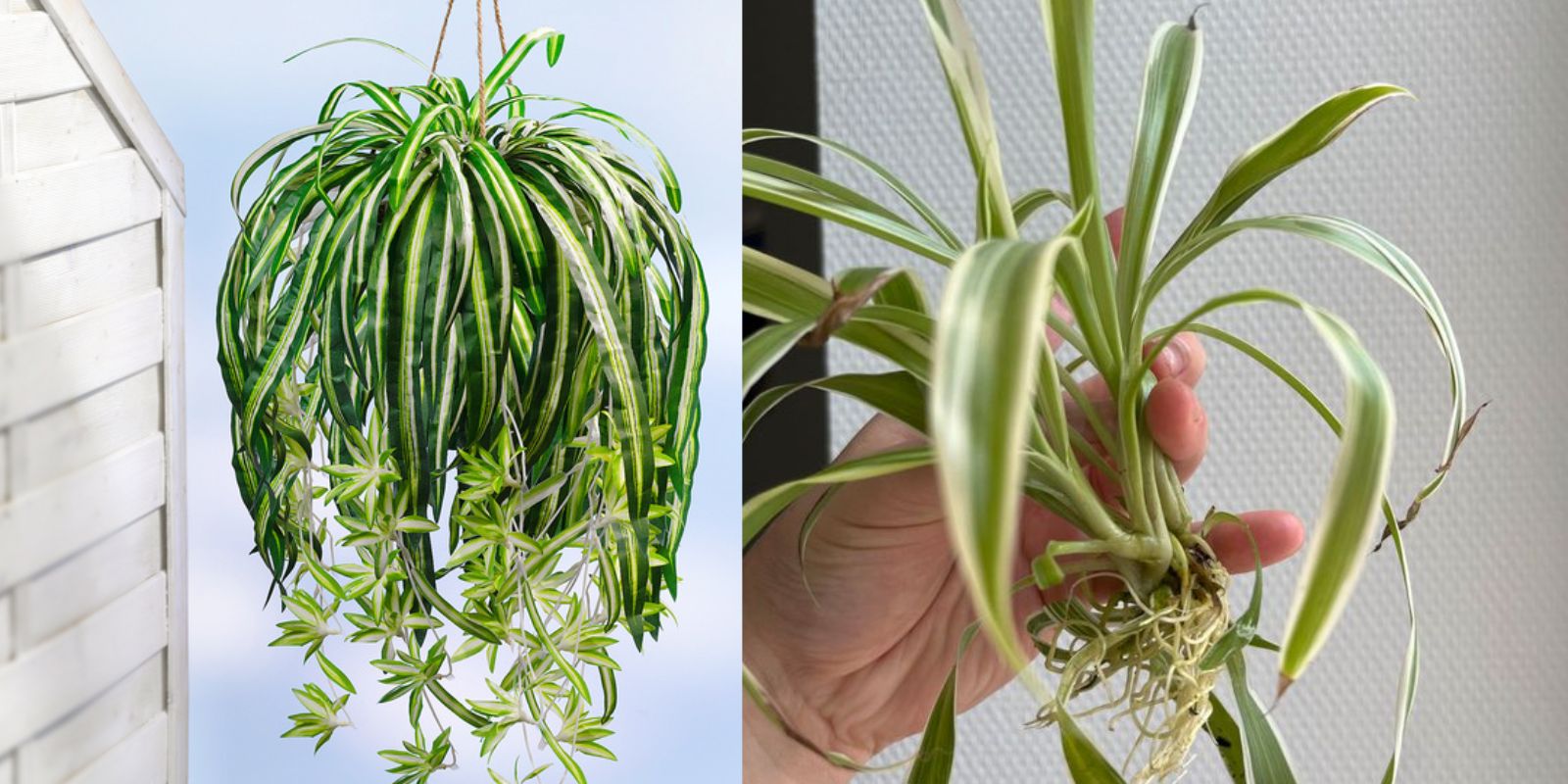The spider plant (Chlorophytum comosum) is a staple of indoor gardening, cherished for its ability to thrive in nearly any environment and for its remarkable air-purifying properties. This hardy houseplant has earned a place in homes worldwide, not only for its aesthetic appeal but also for its health benefits. In this comprehensive guide, we’ll explore how spider plants improve air quality, how to care for them, and how they can transform your home into a greener, healthier space.
Why Spider Plants Are Amazing Air Purifiers
Indoor air pollution is a growing concern, with common household items releasing harmful substances like carbon monoxide, benzene, and formaldehyde. NASA’s Clean Air Study identified spider plants as one of the most effective plants for removing these toxins.
- Carbon Monoxide: Spider plants excel at absorbing carbon monoxide, making them ideal for homes with gas stoves or garages.
- Formaldehyde: Found in furniture, insulation, and cleaning products, formaldehyde is effectively filtered by spider plants.
- Oxygen Production: Like all green plants, spider plants release oxygen, improving the overall air quality in your home.
A single spider plant can make a noticeable difference, but a few placed strategically throughout your home can work wonders for your indoor environment.
How to Care for a Spider Plant
Spider plants are incredibly forgiving, making them perfect for beginners and busy plant parents. Here’s how to ensure your spider plant thrives:
1. Choose the Right Location
- Light: Spider plants prefer bright, indirect sunlight. Direct sunlight can scorch their leaves, while low light may stunt their growth.
- Temperature: They thrive in temperatures between 65–75°F (18–24°C). Avoid placing them near cold drafts or heating vents.
2. Use the Proper Soil
- Spider plants do best in well-draining potting soil. A mix that includes peat moss, perlite, and loam will ensure proper aeration and drainage.
3. Water Properly
- Water your spider plant when the top inch of soil feels dry. Overwatering can lead to root rot, while underwatering may cause brown tips on the leaves.
- If your tap water contains high levels of fluoride or chlorine, consider using filtered or distilled water, as spider plants are sensitive to these chemicals.
4. Fertilize for Growth
- During the growing season (spring and summer), feed your plant monthly with a balanced, water-soluble fertilizer. Reduce or stop fertilizing during the dormant winter months.
5. Repot When Necessary
- Spider plants grow rapidly and may become root-bound. Repot every 1–2 years or when roots start growing out of the drainage holes.
Propagating Spider Plants
One of the most exciting aspects of spider plants is their ability to produce baby “spiderettes.” These small offshoots grow on long stems and can be propagated easily.
Steps to Propagate Spider Plants:
- Wait for Spiderettes to Grow: Allow the baby plants to develop roots while still attached to the mother plant.
- Prepare a New Pot: Use a small pot with well-draining soil.
- Cut and Plant: Gently cut the spiderette from the stem and plant it in the prepared pot. Water lightly.
- Watch It Grow: Place the pot in a bright, indirect light, and keep the soil slightly moist.
Soon, you’ll have new spider plants to gift to friends or expand your indoor garden!
Benefits of Having Spider Plants in Your Home
1. Improved Air Quality
As mentioned, spider plants are champions of air purification. They are particularly useful in rooms with poor ventilation or high levels of indoor pollutants.
2. Stress Reduction
Studies show that indoor plants like spider plants can reduce stress, improve concentration, and enhance overall well-being. Their cascading green leaves add a calming effect to any room.
3. Low-Maintenance Beauty
With their vibrant green leaves and elegant arching stems, spider plants are a timeless decorative piece that requires minimal care.
4. Pet-Friendly
Unlike many houseplants, spider plants are non-toxic to pets, making them safe for households with cats and dogs.
Common Issues and How to Fix Them
1. Brown Leaf Tips
- Cause: This is often due to fluoride or chlorine in tap water, or inconsistent watering.
- Solution: Switch to filtered water and ensure you’re watering only when the soil is dry to the touch.
2. Yellowing Leaves
- Cause: Overwatering is the most common culprit.
- Solution: Check the soil’s moisture level and adjust your watering schedule.
3. Pest Infestations
- Cause: Spider mites or aphids can occasionally infest spider plants.
- Solution: Wipe leaves with a damp cloth and use insecticidal soap if needed.
Where to Place Spider Plants for Maximum Impact
Spider plants thrive in various indoor settings. Here are a few ideas for incorporating them into your home:
- Living Room: Place a hanging spider plant near a window for a striking display.
- Kitchen: Add a spider plant to counter space to filter cooking fumes.
- Bedroom: Keep one near your bed for cleaner, oxygen-rich air while you sleep.
- Bathroom: Spider plants thrive in humid environments, making bathrooms ideal.
Spider Plants: A Green Investment for Your Home
If you’re looking for a low-maintenance, high-reward plant, the spider plant is your perfect match. Not only does it enhance your home’s aesthetic, but it also actively works to improve your health by purifying the air. Whether you’re a seasoned gardener or just starting your plant parent journey, spider plants are a must-have.
Ready to bring home a spider plant and experience its benefits? Share your gardening tips or questions below and let’s grow together!
#SpiderPlantCare #IndoorGardening #CleanAirPlants #GreenLiving #PlantParenthood #EcoFriendlyHome

